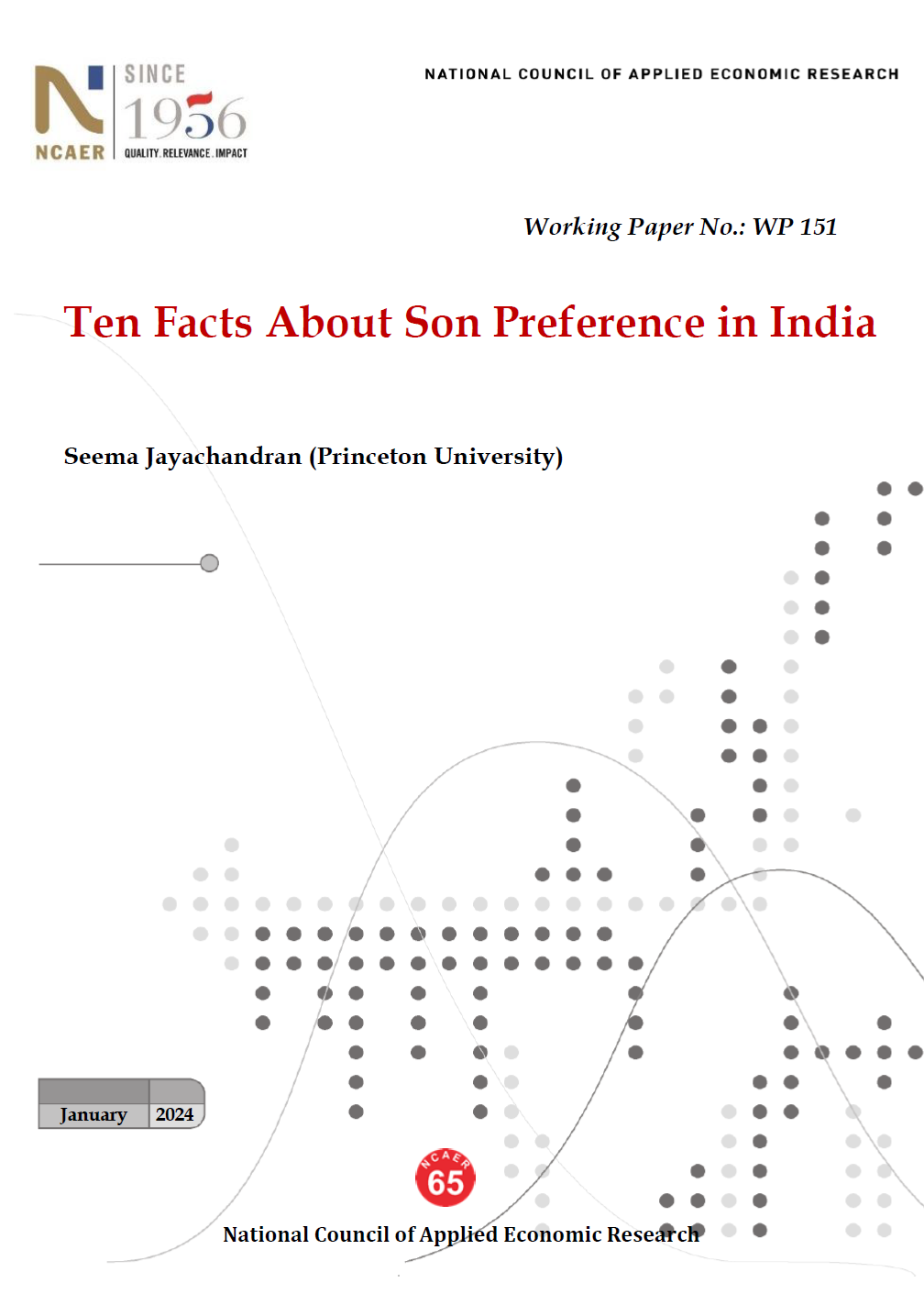Ten Facts About Son Preference in India
Seema Jayachandran
January 2024
This article discusses son preference in India, encompassing both differential investment in sons and a fertility preference to have sons. Regarding differential investment, I focus on child health, where the evidence shows that gender gaps in inputs and outcomes have narrowed in recent years. Nonetheless, girls remain disadvantaged in important ways, and making health services free might not be enough to close these remaining gaps. In addition to gender gaps, there are also stark health gaps between eldest sons, whom parents favor, and other sons. The desire to have a son ― to play that eldest son role in the family ― drives the skewed sex ratio, and it shows little sign of abating. In fact, the downward trend in family size is exacerbating how the desire for a son translates into sex-selection. Families’ quest for a son also imposes collateral damage on sisters’ health. The policy challenge, particularly around diminishing the desire for sons, is large. Empowering women is not a panacea. Offering financial incentives to have daughters risks further concentrating girls in poorer families. While we do not know which policies will erase the disadvantages girls face in India, several policies warrant implementation or at least testing, such as public pensions as an alternative to old-age support from sons, increased delivery of health services through schools, and attitude- and norm-change interventions that aim to increase the intrinsic value that Indian families place on girls.
Human Development and Data Innovation







